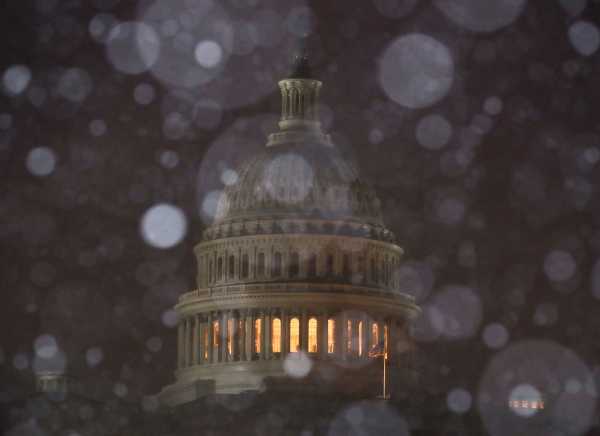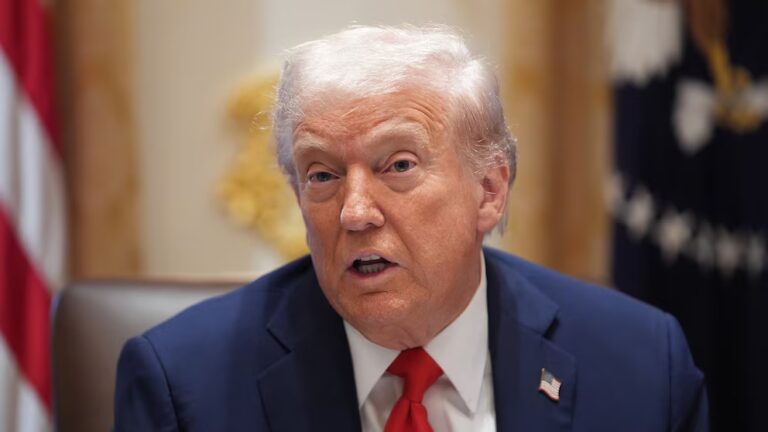
The starting gun for Congress’s next big spending fight sounds on March 1.
That’s when the federal debt ceiling, as written into federal law, will be breached. There won’t be an immediate crisis, because the US Treasury Department can take “extraordinary measures” to delay a default on US debts. But the clock will start ticking. Those measures will probably be exhausted by the late summer or early fall, so Congress will need to act by then.
The fall is also, serendipitously, the time that Congress needs to reach a deal to avert automatic spending cuts. The budget caps from the 2011 budget deal are still in place for two more years, something Democrats and Republicans hate. The caps require across-the-board cuts on domestic and military funding, known as sequestration, if federal spending exceeds them. Congress has reached deals every two years since 2013 to lift the caps. The next deadline for a deal to prevent big spending cuts is October 1.
Aides from both parties think that convergence means it’s likely the next debt ceiling increase will end up being paired with a deal to lift those federal spending caps. Nobody wants a debt default, nobody wants automatic spending cuts, so it makes sense to tackle both of those issues in one package.
But just because Democrats and Republicans agree on the goals doesn’t mean it will be easy to find a compromise. They’re going to have to figure out exactly how much to boost both defense and non-defense spending — and there could be an even pricklier fight about whether those increases should be offset by tax increases or spending cuts elsewhere.
The negotiations are just getting started, with the shutdown crisis and immigration talks finally behind us. But the contours of the next big spending fight in Congress are already clear.
Why Democrats and Republicans want to reach a deal on spending caps
Let’s review why Congress has to keep lifting these spending caps: During the Obama administration, House Republicans and the White House set up “sequestration,” automatic spending cuts that would take effect unless President Obama and Republicans in Congress agreed on a bigger budget deal to avert them. They never did reach a grand bargain, so now the federal government is stuck with the ever-present threat of sequestration.
But everybody hates it: Republicans because it would lead to military spending cuts and Democrats because it would cut social programs and other domestic priorities.
So every few years, starting with a deal between Republican Rep. Paul Ryan and Democratic Sen. Patty Murray in 2013, the two parties have compromised on raising the spending caps in order to prevent these sequestration spending cuts nobody wants. This time around, defense funding would be cut by $71 billion and non-defense funding by $55 billion unless a caps deal is reached.
(To get a little more technical, the spending caps set the parameters for the actual spending bills that Congress has to pass every so often to keep the government open. That’s why the spending caps are so important, even if they don’t actually appropriate any money.)
Whenever these spending cap negotiations come up, Republicans and the White House want to increase defense spending and Democrats want to have a corresponding increase in domestic spending — it usually works out to be an almost dollar-for-dollar trade-off.
That will likely be the basis for these negotiations again, Democratic and Republican aides told me. And Democrats definitely want to combine a spending caps deal with a debt limit increase, a senior Democratic aide says.
Republicans don’t seem quite as committed to that pairing, but as one GOP aide pointed out, it allows Senate Republicans to take just one tough vote — neither expanding the federal debt nor busting through spending caps is particularly popular within the party, even if most of them recognize the necessity of doing so — rather than two. It also prevents a spending fight from dragging into an election year.
So both parties have an incentive to sit down and make a deal. But there will a lot of jockeying for leverage as they look to make the best deal for themselves without giving too much away to the other side — a game that has already started with a recent leak out of the White House.
The pitfalls from the upcoming spending cap negotiations, explained
The parameters for a fight are already emerging: The White House is floating a somewhat cockamamie idea for getting around the limits on defense spending, which involves funding for a Pentagon account that’s exempt from the spending caps, as Axios reported last week.
The White House thinks this will strengthen their position when negotiating with Democrats on domestic spending, but Democrats aren’t buying it. That Pentagon funding increase would still require Congress’s approval, so Democrats are still going to want non-defense spending increases if they’re going to agree to the White House’s demands. The Republican aide I spoke with admitted that while Republicans are generally fond of the idea in favor of floated by the White House, it isn’t very likely considering Democrats would have to sign off on it.
Still, once President Trump has an idea in his head, it can be hard to change his mind. So first Democrats and Republicans will have to resolve this issue — but even if Democrats were going to agree to boost this Pentagon fund, they would want corresponding domestic spending increases. The contours of the negotiations are still going to be the same.
The other question is about offsets. The earlier caps compromises have included a variety of provisions — selling oil, some select spending cuts, a few revenue raisers — to offset the costs of increasing the spending caps. But as congressional aides pointed out, most of the low-hanging fruit to find that money has already been picked. It would require more difficult decisions now to offset the cost of lifting the spending caps.
Democrats don’t sound all that concerned about finding offsets, and they noted the more recent caps deals haven’t done as much to cover their costs. But Republicans might draw a harder line on this, especially with some fiscal conservatives like Rick Scott and Mike Braun having just joined the Senate. If they do, that is going to complicate these talks a lot.
One final wild card is whether the ascendant left in the House Democratic majority makes a ruckus over military spending increases. For most Democrats, that’s just the cost of doing business. But these will be the first major spending negotiations for the newly elected left, a chance to leave their mark on the federal coffers.
In general, though there is still a long way to go, aides close to the process seem to be banking a fair amount on fatigue. Nobody wants sequestration, and this will be the last spending caps deal Congress needs to pass to avert it before sequestration’s statutory authority runs out in 2022. After that, sequestration is done and Congress can go back to setting funding levels in a budget resolution like it used to do.
The hope is seeing that light at the end of the tunnel will motivate both sides to make a deal. They also already know the rough outline of what a compromise would look like. But there are still plenty of pitfalls standing between Congress and an official, long-awaited end to sequestration.
Sourse: vox.com






